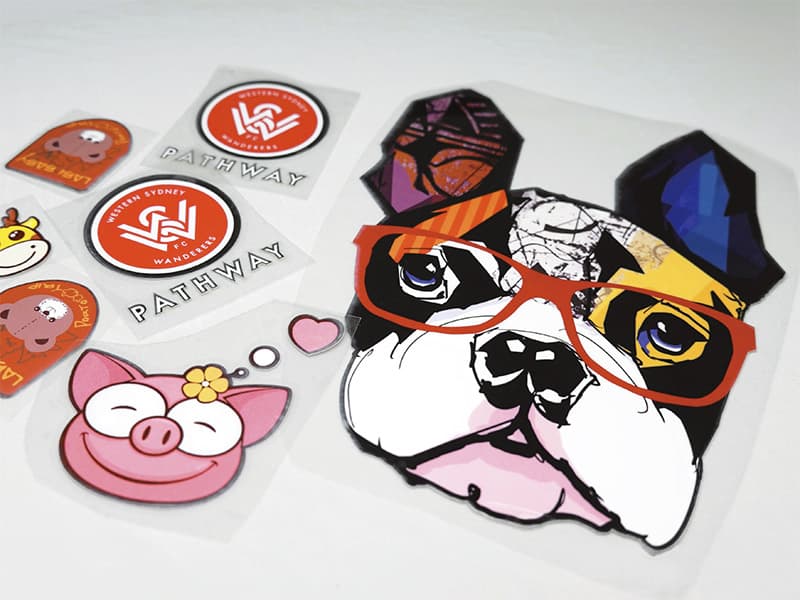
Our production team will check every design carefully to ensure all the details are correct. Whether you are a beginner that needs help, or a professional design company with higher requirements for stable quality, vivid color, and fine details, our DTF transfers are your best choice.
DTF stands for direct to film. It’s a revolutionary technology to print designs directly onto a PET film, similar to a home or office paper printer. This film is then applied to the material in a heat press, causing the ink to bond directly onto the apparel.
For the small and medium-sized production runs, DTF transfers are a cost-effective choice as they don't require the same level of setup as other printing methods.
When you want a super-soft, lightweight print with lots of colors in the design, our DTF transfers the best way to go.
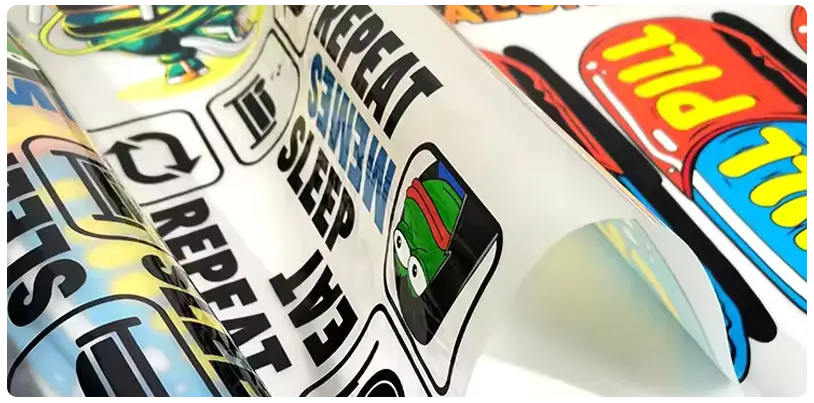
We invest in state of the art technology to provide top quality print with stunning colour reproduction.
The colors are more vivid and bright across any color combination.
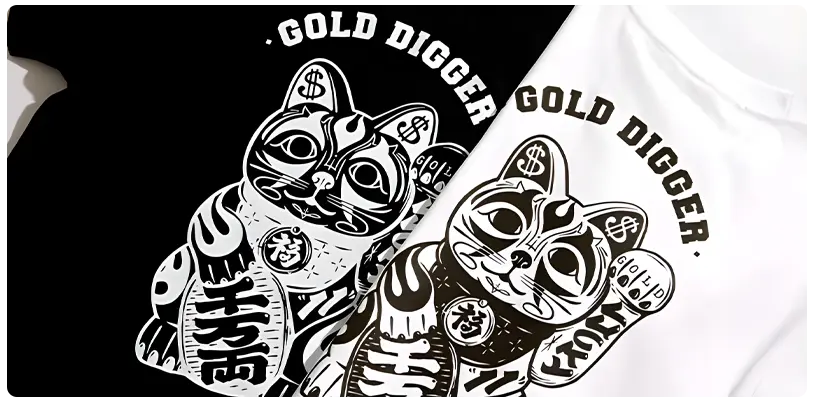
It can be applied to any color garment and any fabric type, including cotton, polyester, cotton/poly blends, and Tri-blends, light or dark shirts, they will all work perfectly.
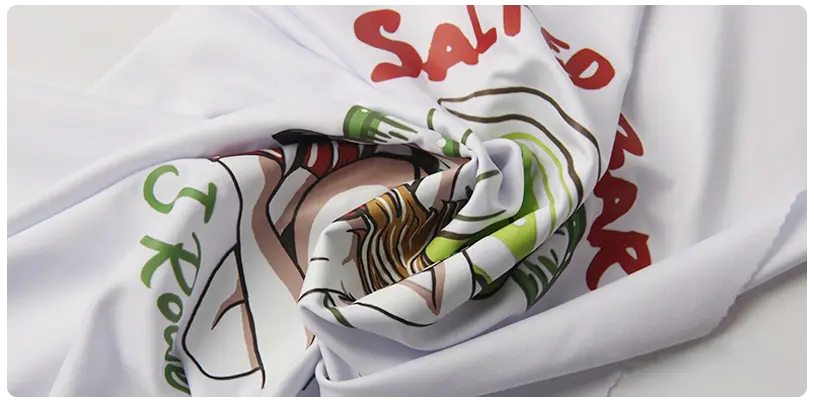
Our transfers have great stretchability and a soft feel on account of our special formula.
It last as long as traditional silkscreen prints, stays vibrant after over 45 wash cycles with no fading or cracking.
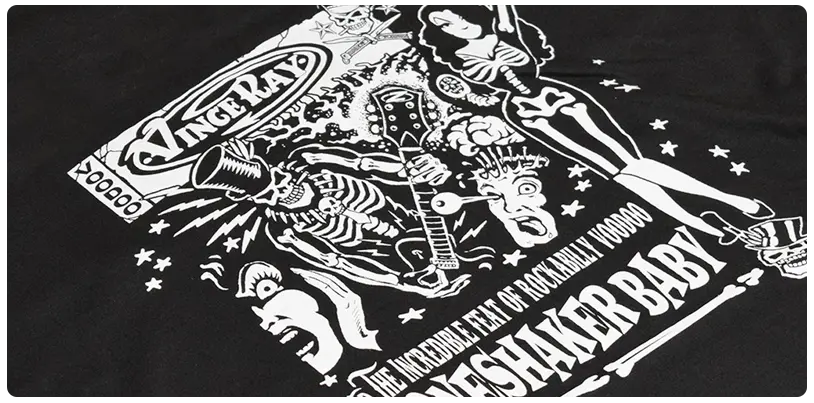
DTF transfers can handle tiny letters, skinny lines and tiny spots (down to 5 pixels), the fine lines or text can be easily read and understood even from a distance.
| Size | 4-9 | 10-29 | 30-99 | 100-299 | 300+ |
|---|---|---|---|---|---|
| 5.5"x5.5" | $1.35 | $1.00 | $0.85 | $0.75 | $0.70 |
| 7.5"x7.5" | $2.05 | $1.65 | $1.45 | $1.25 | $0.95 |
| 7.5"x10" | $2.45 | $1.80 | $1.60 | $1.35 | $1.25 |
| 10"x10" | $2.95 | $2.15 | $1.95 | $1.80 | $1.65 |
| 10"x12" | $3.45 | $2.40 | $2.30 | $2.05 | $1.85 |
| 11.2"x11.2" | $4.05 | $2.80 | $2.40 | $2.20 | $1.95 |
| 11.2"x14" | $4.75 | $3.20 | $2.95 | $2.65 | $2.30 |
| 11.2"x18" | $5.70 | $4.30 | $4.05 | $3.65 | $2.90 |
| 16"x18" | $9.20 | $7.30 | $6.90 | $6.30 | $5.10 |
Contact Us for High-volume Order: [email protected]
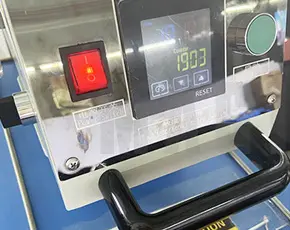
TEMPERATURE: 320ºF/ 160℃
PRESSURE: Medium
Put the T-shirt on the flat pad and heat press for 3-5 seconds, this process will release the wrinkles and moisture from the fabric.
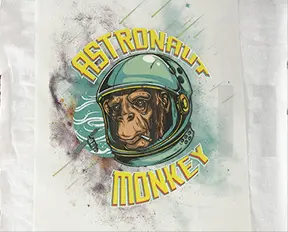
Place the transfer on the shirt, image facing up. Push the press handle to start and apply for 5-6 seconds.
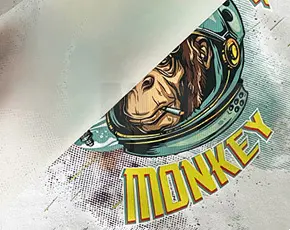
It's hot peel now, just peel off the sheet in a smooth, even motion. And press again (2-5 seconds) to enhance the final durability.
NOTE:
--- It is recommended to press again for 2-5 seconds after peeling the film off. It will help the adhesive stick stronger, especially when you have tiny portions in your design.
--- Each heat press is different. It is recommended that you test your press at different pressure/temperature/time settings to determine the best settings for you.
--- Please increase the temperature to 330-340ºF if there are lots of tiny portions or small letters in your design.
" Really great quality and saturation. We submitted a photograph and it came out super clear and just as anticipated. Thank you! "

" Wow!! First time I’ve used this type of transfer! Totally amazed at the quality! Will return for sure "
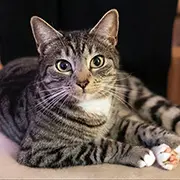
"ABSOLUTELY PERFECT! Very fast shipping and the print was beautiful and turned out vibrant and gorgeous"

Yes. We provide more flexible canvas size option Instead of a fixed 22" wide. You can just create the gang sheet according to the canvas size you choose and put multiple designs on it, as small as 5.5"x5.5".
To get the most for your money using custom dtf transfers, you need to know what a “Gang Sheet” is. A gang sheet means printing multiple designs on the same transfer sheet, You will build out your own sheet and it will come in a sheet with multiple logos. You can put as many as logos as you can in one gang sheet. We have no limitations.
Custom DTF Transfers for t-shirts are very simple with SmartPrintTransfers.
---CRACKING: Cracking is 99% of the time caused by not enough pressure. Make sure your press is set to be hard to open and close. It is recommended that you use 60PSI. All print will eventually crack, it is just the nature of the ink but the proper application will make them last a long time.
---STICKING: If your transfer is sticking to the transfer paper and not releasing you will need to up your temp a few degrees and add extra pressure. Your paper should easily peel off leaving behind the perfect transfer. --PEELING: If your transfer is peeling up from your shirt this means that the transfer wasn't properly applied to your shirt. You need to up your temp and pressure.
Yes, you can use a household iron to apply heat until the image transfers. It’s easier and faster, but there are significant disadvantages to using iron. Prints fade after several washes and do not last long. Ironing prints will ruin the image if you go with the wrong temperature.
Anyway, if you are looking for a t-shirt that you will only wear few times, such as Wedding Party Shirts, you may consider going through with an iron.
For print the T-shirts you going to sell. A heat press is needed to ensure the heat transfers is apply with enough pressure and temperature.
We will not refund purchases if you use an iron to apply for heat transfers.
Sublimation has better performance in softness and breathable as the ink is transferred onto the fabric.
However, sublimation transfer has obvious shortcomings. It only work well on light-colored fabric have a very high polyester count. Otherwise, the image will have a vintage or faded look.
DTG printed shirts have possibly the best feel to them. With DTF transfer, you can print full-color graphics on almost any fabric. It works great on 100% cotton, cotton-poly blends, and so much more. Suited for light or dark shirts. And better cost-effect for small orders.
The above is the difference between DTF transfer and sublimation transfer. I hope to help you make a choice that suits you.
With proper care of your garment, our heat transfers can withstand about 40-50 washes before it shows signs of fading. In some cases, the design will be cracking or creasing, which is usually due to over curing or under curing.